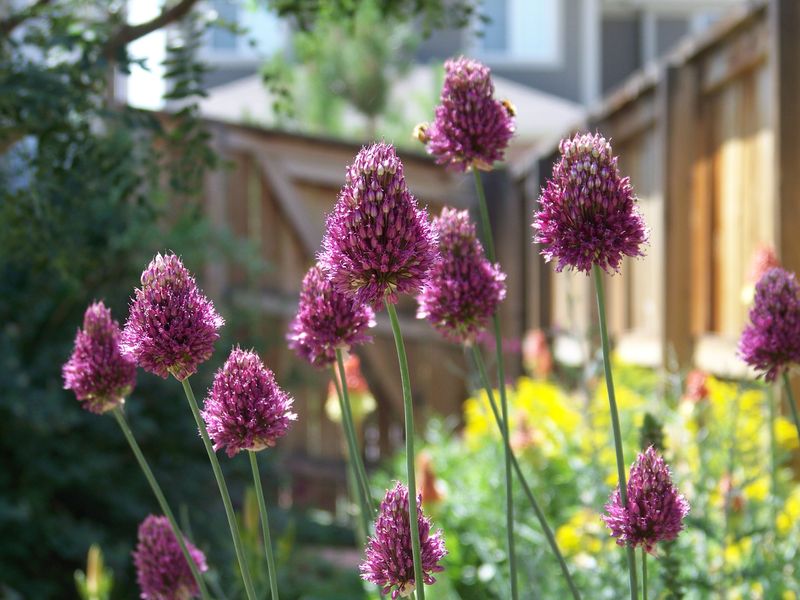In this guide, we will dig deep into the timing, considerations, and care associated with planting allium bulbs, ensuring your garden thrives with their fantastic floral displays.
Understanding Allium Bulbs

Before we discuss the specifics of planting, it’s essential to get acquainted with what allium bulbs are. Alliums are perennial bulbs that come in a wide range of types, with some of the most popular being Allium giganteum (giant allium), Allium moly (golden garlic), and Allium christophii (star-of-Persia). These bulbs are renowned for their resilience, adaptability, and unique floral architecture, which typically blooms in late spring to early summer.
The sizes and colors of the blooms can vary immensely—from deep purple and blue to white and pink—offering a broad spectrum of choices for gardeners. Considering their ease of care and dramatic appearance, knowing when to plant these bulbs is crucial for a successful bloom.
The Best Time to Plant Allium Bulbs
Timing is Everything
The timing for planting allium bulbs largely depends on your climate zone and the specific variety of allium you’re working with. Generally, alliums are best planted in the fall, approximately 6 to 8 weeks before the ground freezes. This allows the bulbs to establish roots before winter sets in.
In regions with milder winters, you might have the flexibility to plant them in late summer. However, if you live in an area that experiences harsh winters, planting in the spring can be challenging as bulbs may require a chill period to bloom profusely.
Regions and Climate Considerations
In colder climates, like USDA Hardiness Zones 3 through 5, planting allium bulbs in early to mid-fall is optimal. This allows them to undergo winter dormancy naturally. The bulbs remain dormant and develop roots until they start to grow in the spring as temperatures rise.
For gardeners in USDA Zones 6 to 8, early fall remains a prime time, but some may also choose to plant in late winter or early spring once the soil is workable. Keep in mind that spring planting may lead to weaker growth or late blooms, as the bulbs may not have adequate time to settle.
The Importance of Soil Temperature
Understanding soil temperature is key when determining the perfect planting time. Allium bulbs prefer soil temperatures between 60°F and 70°F (15°C to 21°C) for optimal growth during their rooting phase. A simple soil thermometer can help you gauge the right time to plant.
Aim to plant when the soil temperature begins to drop in the fall but before it freezes. Conversely, if you’re considering spring planting, make sure the frost has passed and the soil has warmed to a comfortable planting temperature.
How to Prepare for Planting Allium Bulbs

Selecting Quality Bulbs
Before planting, selecting high-quality bulbs is paramount. Look for bulbs that are firm and free of mold or soft spots. Larger bulbs generally produce stronger plants, so consider size when making your selection.
Purchasing bulbs from a reputable garden center or certified supplier is advisable to ensure you’re getting healthy and viable bulbs. Pay attention to the variety and ensure you’re purchasing what will thrive in your specific climate and soil conditions.
Preparing the Soil
Allium bulbs prefer well-drained soil rich in organic matter. Therefore, before planting, take some time to prepare the planting site thoroughly. Here’s how:
Choose the Right Spot: Alliums flourish in full sun, so select an area that receives at least 6 hours of sunlight each day.
Soil Testing: Conduct a soil test to determine pH and nutrient levels. Alliums thrive in slightly acidic to neutral soil (pH of 6.0 to 7.0). If adjustments are needed, add amendments accordingly.
Amend the Soil: Improve drainage and fertility by mixing compost or well-rotted manure into the soil. Avoid overly sandy or heavy clay soils, which can hinder the bulb’s performance.
Tilling and Aeration: Till the area to aerate the soil, which improves drainage and allows for proper root development.
Planting Allium Bulbs: Step-by-Step Instructions
The Planting Process
Now that you have carefully selected and prepared everything, it’s time to plant the bulbs.
Depth and Spacing: Generally, allium bulbs should be planted at a depth of approximately two to three times their height. For most allium bulbs, this is around 4 to 8 inches deep. Spacing should typically be around 6 to 12 inches apart depending on the type of allium; larger varieties may need more space.
Positioning: When planting, place the bulbs with the pointed end facing upwards, as this is where the shoots will emerge from.
Backfilling: Gently cover the bulbs with soil, ensuring they are well-positioned and adequately deep. Pat the soil down lightly to remove any air pockets.
Watering: After planting, water the area thoroughly but avoid over-saturating the soil. Proper moisture is crucial for bulb activation and root establishment.
Mulching: Consider adding a layer of mulch to help retain moisture, regulate soil temperature, and prevent weed growth as the alliums begin to establish.
Timing of Blooming: Understanding the Growth Cycle
From Planting to Bloom
Once planted, your allium bulbs will remain underground for several months. As spring approaches, they will emerge, awakening from their winter slumber. The process generally involves:
Root Development: During the cold months, the bulbs focus on developing roots, making them stable and ready for the growth spurt that follows warmth.
Shoot Emergence: As soil temperatures rise and day length increases, shoots will break through the soil. These are typically seen from late February to early April.
Flowering: Alliums usually bloom from late spring to early summer, depending on the species and local climate. Blooms can last up to several weeks and provide fantastic spectacle within your garden.
When to Expect Pollinators
Allium’s blooms are not only a treat for the eyes but also attract various pollinators like bees and butterflies. Their flowering period often coincides with the early blooming cycle of many plants, providing a crucial food source for these essential creatures. This dynamic makes alliums not just beautiful but also beneficial for garden ecosystems.
Care and Maintenance for Thriving Alliums

Aftercare Following Planting
Once your alliums are planted, the focus shifts to care and maintenance—ensuring they thrive in your garden space.
Watering: While alliums prefer moderate watering, consistent moisture is necessary, especially during dry spells. However, be cautious of waterlogging, which can lead to bulb rot.
Fertilization: In early spring, you can apply a balanced fertilizer to provide essential nutrients and encourage robust growth and flowering.
Weed Control: Regularly check for weeds that can compete for nutrients and light. Hand-pulling is an effective way to manage weeds without disturbing the bulbs.
Pest Management: Though alliums are relatively pest-resistant, keep an eye out for any signs of pests like aphids. Implement organic pest control solutions when necessary.
Post-Bloom Care
Once flowering is complete, you might wonder what to do next.
Cutting Back: Avoid cutting the foliage too early; the leaves should remain until they naturally wilt and die back. This allows the plant to gather energy and store nutrients for the upcoming season.
Fertilization After Flowering: Some gardeners opt to apply a slow-release fertilizer after blooming to promote a more vigorous growth cycle next year.
Dividing Bulbs: Every few years, consider lifting and dividing the bulbs to prevent overcrowding and to encourage healthy blooms. This is best done after the foliage has died back and can be done during the fall.
Common Questions about Planting Allium Bulbs
Can I Plant Allium Bulbs in Spring?
While spring planting is possible, it’s not ideal since bulbs may not establish as effectively compared to fall planting. For a successful spring planting, choose varieties that are suited for your specific climate and ensure they are planted once the frost has passed.
Are Alliums Resistant to Animals?
One of the perks of planting alliums is their resistance to deer and rabbits, making them an excellent choice for gardens in areas with these common pests. The strong scent emitted by the bulbs tends to deter animals.
How Long Do Allium Bulbs Last?
Allium bulbs can last many years if properly cared for and planted in suitable conditions. Some gardeners even report blooms from the same bulbs for over a decade!
Do Alliums Spread?
Many allium varieties can multiply and spread by offsets and self-seeding, leading to more blooms in subsequent years. However, some types may require division to maintain their vigor.
Conclusion: Embrace Timing for Thriving Alliums
Planting allium bulbs can be a delightful experience, from selecting the right varieties to preparing your garden’s soil. The key to success lies in understanding the ideal timing for planting and the specific care your bulbs require. By following the guidelines laid out in this post, you will encourage a vibrant display of blooms that not only add beauty to your garden but also aid in creating a healthy ecosystem for pollinators.








